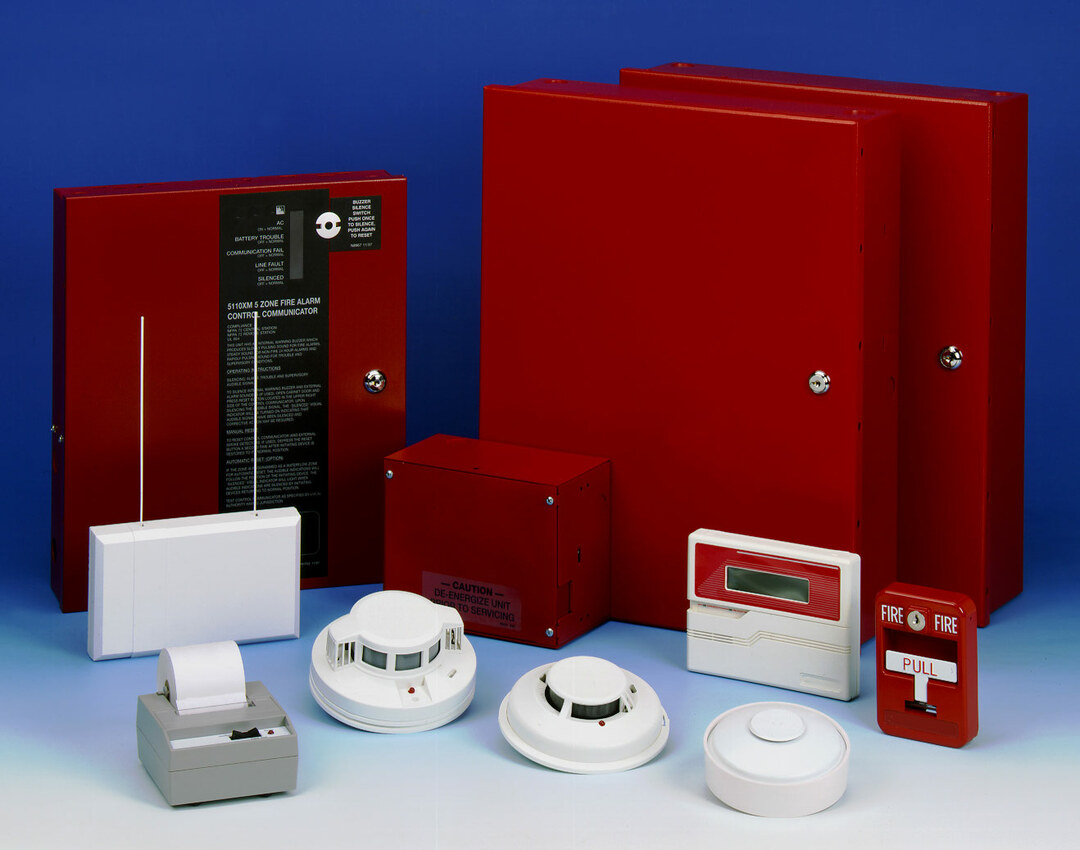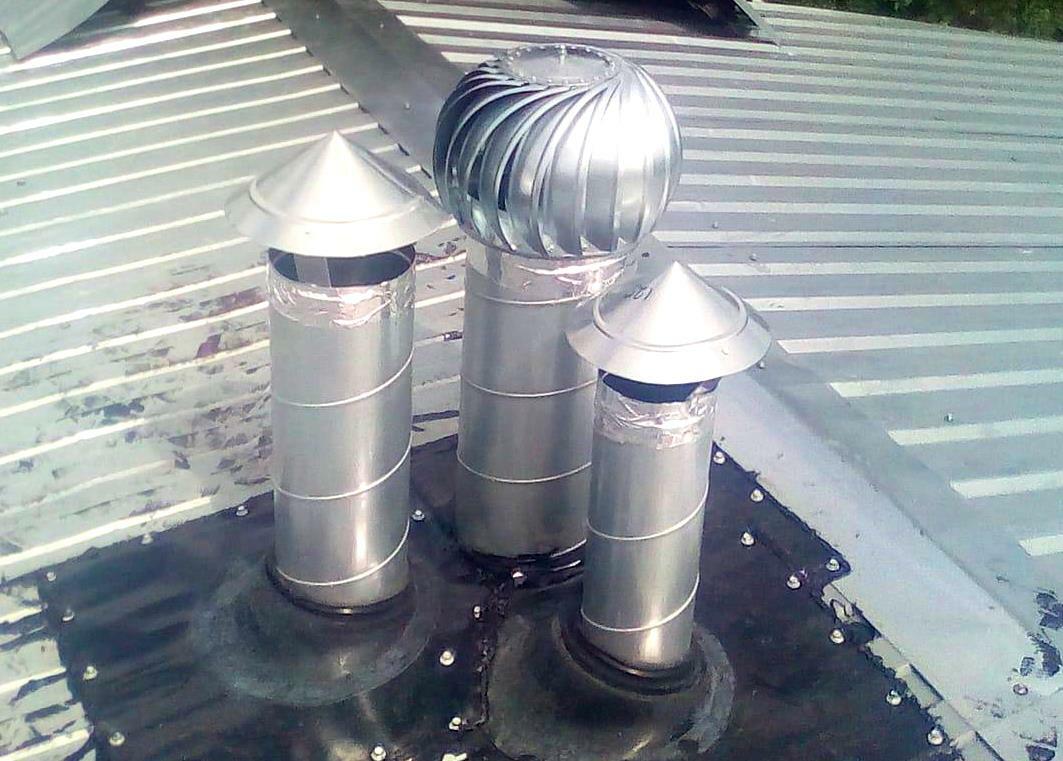“Ventilation plays an important role in the planning of small private houses, multi-storey buildings, industrial, industrial, office buildings and institutions. First of all, human health depends on the correct organization of the ventilation of the premises. Therefore, the correct choice of ventilation pipes when installing ventilation systems is of great importance.
One of the popular materials for arranging external ventilation ducts is a sandwich pipe for ventilation. But what is it and how to properly install a system from such pipes?
This is what we will talk about in detail in this article - we will consider in detail the issues related to the use and installation of sandwich pipes when arranging ventilation.
The content of the article:
- Construction and use of sandwiches
- Pros and cons of sandwich pipes
- What to look for when choosing?
-
The procedure and nuances of the installation of "sandwiches"
- Ventilation assembly instructions
- Rules and useful guidelines
- Conclusions and useful video on the topic
Construction and use of sandwiches
To organize natural mechanical exhaust, it is necessary that the air ducts meet a number of requirements.
The main ones are:
- ensuring the tightness of the ventilation system;
- the ability to maintain the required air pressure in the system;
- ensuring the free passage of air inside the ventilation system;
- maintaining the required thermal insulation.
To ensure compliance with the requirements, depending on climatic conditions, type and purpose of buildings, different types of ventilation pipes.
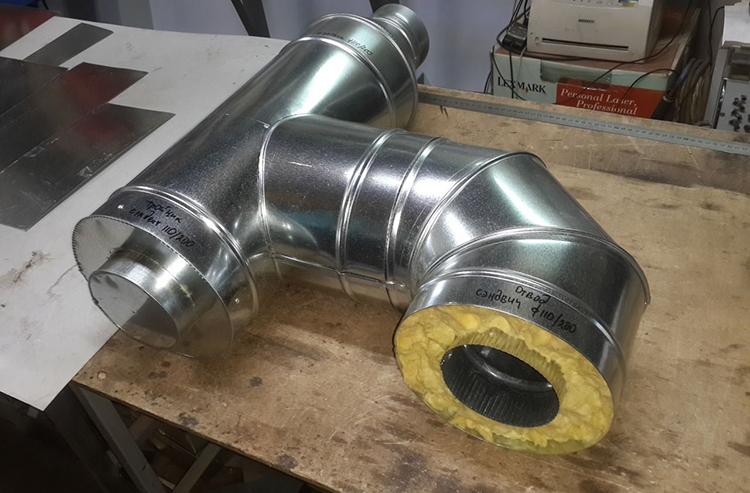
The thickness of the insulation layer depends on the required operating temperature inside the ventilation system. Also, the diameter and dimensions of the pipes used affect the thickness of the thermal insulation.
Sandwich pipes are used not only for the installation of ventilation, but also for:
- private houses, where it is used as chimney - to remove air masses from heating devices (stoves, fireplaces, boilers);
- apartment buildings in the northern regions of the country;
- production buildings, inside which work with high heat transfer is carried out (workshops for melting metals, workshops for the production of glass);
- grain storage buildings.
The necessary properties are acquired by products due to a special technology by which a sandwich of pipes is made. Also, due to their design, the feature of which will be discussed below, these pipes are suitable for connecting heating equipment to them. In this case, they are used as chimneys to remove smoke from the room.
By their design, "sandwiches" consist of two pipes of different diameters, made of high-alloy stainless steel sheet. The connection between each other is made using argon welding. The space formed between the two pipes is filled with a special heat-insulating material, often made on the basis of basalt, with a width of 25 to 60 millimeters.
Such a device makes it possible to maintain the temperature of the exhaust air inside the pipe, without cooling it ahead of time. Thus, the normal draft of air extraction from the room is maintained.
It should be noted that the basalt wool used for insulating sandwich pipes can withstand temperatures up to 1115 ° C. At the same time, it is a non-flammable substance and melts when it reaches a high temperature. Therefore, it is not surprising that "sandwiches" are so popular in chimney construction.
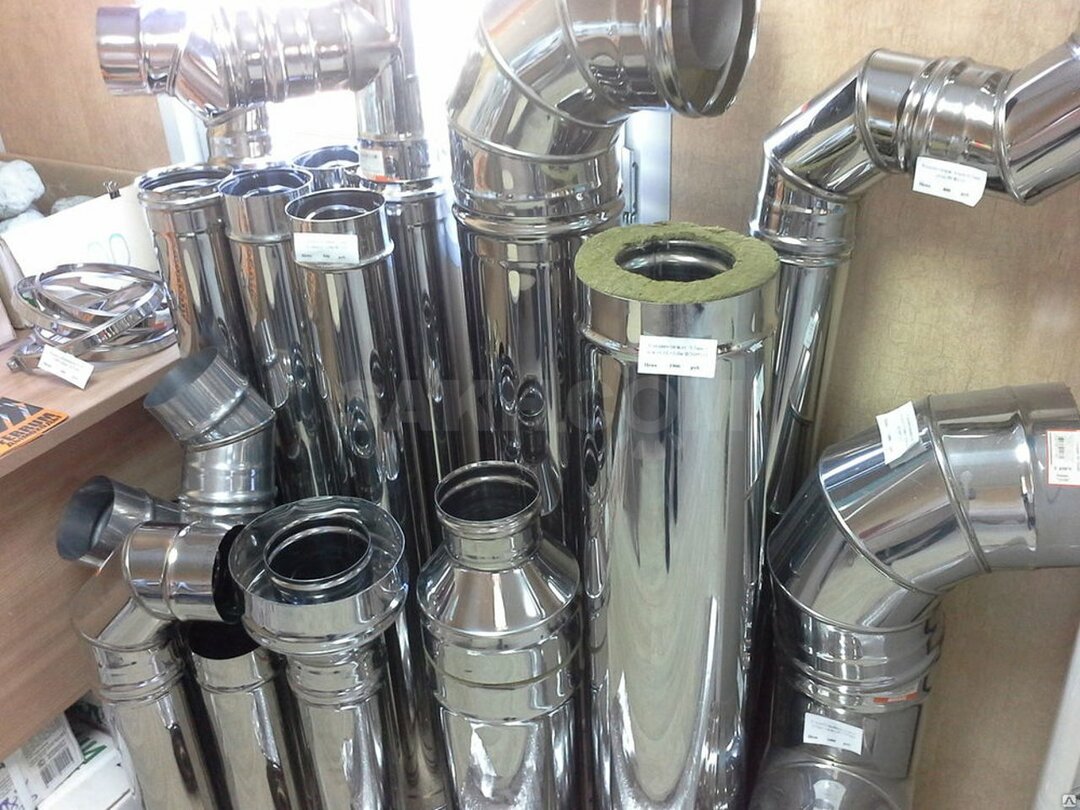
Currently, there is a fairly large selection of sandwich pipes of various diameters on the market. The uniqueness of their assembly lies in the possibility of laying pipes through hard-to-reach passages and the ability to interconnect a sandwich of pipes of various diameters
Depending on the conditions in which the sandwich pipe will be used, a different thickness of insulation is selected.
Also, sandwich pipes can be made using steel sheets made of heat-resistant steel, which is especially important for use in places with high temperatures of air masses.
Pros and cons of sandwich pipes
Among the advantages of ventilation sandwich pipes are:
- lightweight construction - during installation, it will be enough to use the main fasteners, without involving the supporting elements;
- dimensionsthat are not essential and allow you to save more space when placing the ventilation system inside the room;
- versatility in places of use - can be used both indoors and outdoors;
- simple assembly, which allows, if necessary, to give the ventilation system various forms, depending on the layout of the building;
- no condensation and the possibility of its appearance inside the system - it is realized thanks to the insulation and assembly features;
- keeps warm exhaust air inside the structure;
- is fire-safe in use;
- the use of stainless steel smoothes the effect of the external environment, preventing the appearance of rust and, as a result, partial destruction with a violation of the sealing of the ventilation system;
- no need to install a foundation when installing sandwich pipes.
Another advantage of a sandwich pipe is its acceptable cost. The price for 1 meter ranges from 970 to 2900 rubles.
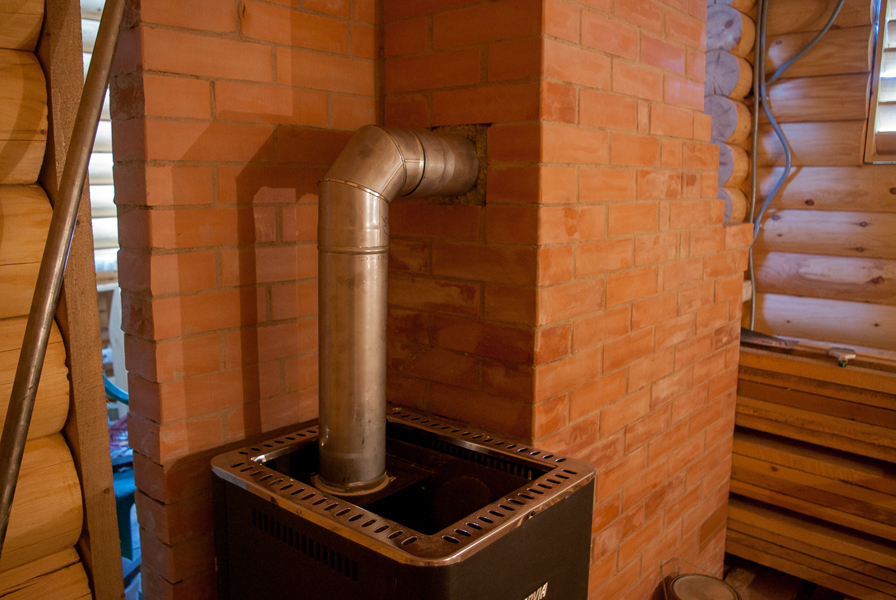
The use of sandwich pipes as a chimney for the removal of combustion products is considered one of the main areas of application. It is this design that allows you to create and maintain the necessary traction power for the removal of waste resulting from combustion.
Experts attribute only one to the disadvantages of using a sandwich pipe - this is the need to replace elements every 10 years.
This is due to the short service life of pipes of this type, which directly depends on:
- timely ventilation system cleaning or chimney (depending on the scope of use);
- observance of accuracy during installation;
- correctly selected equipment for which the hood is installed;
- absence of defects and defects in production.
The service life of sandwich pipes is designed for 10 years with correct operation, therefore, bypassing the ten-year line, a pipeline made of such pipes should be completely replaced.
What to look for when choosing?
When choosing accessories for the installation of a ventilation system made of sandwich pipes, you must be guided by the following characteristics:
- strength of the material of manufacture;
- degree of filling and thickness of thermal insulation;
- quality of welds.
From material strength the service life of the ventilation and chimney system directly depends. In the second case, the thermal insulation core material must at least withstand temperatures up to 700 ° C.
It is strongly advised not to choose fiberglass as a filler.
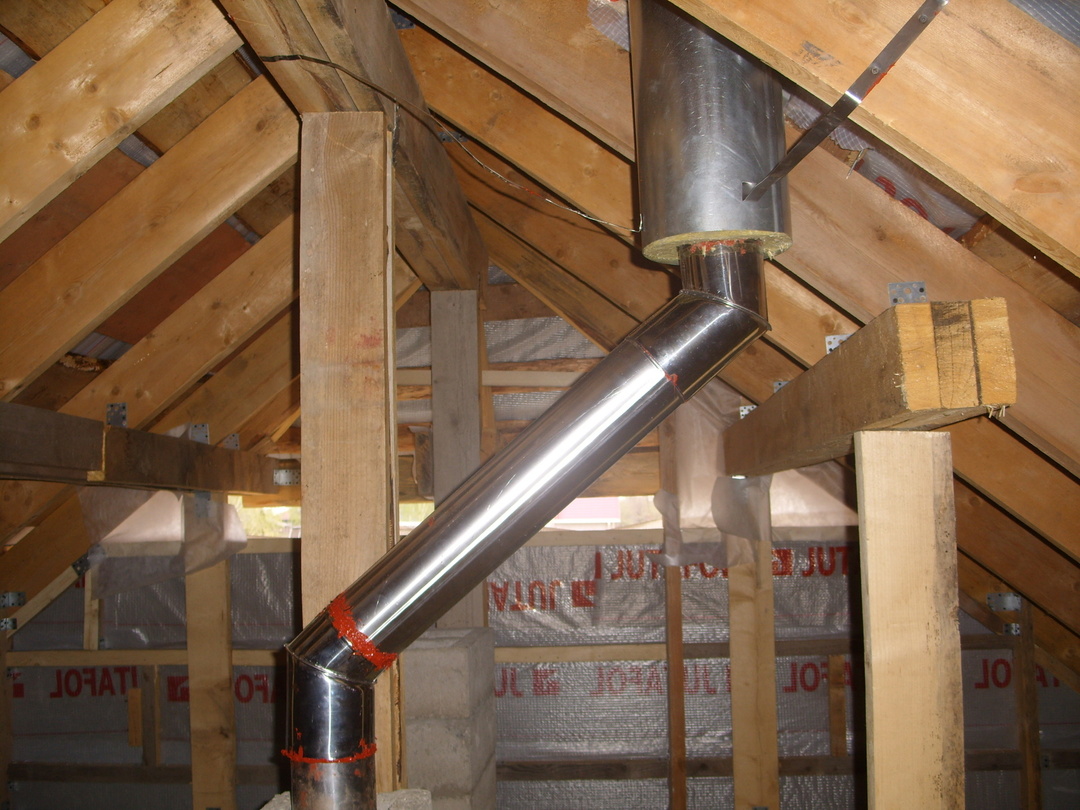
In order to conduct a ventilation system assembled from sandwich pipes, you will additionally need the following accessories: adapters and tees, devices for organizing the passage of pipes through walls and roofs, clamps for fastening, brackets
Welding, providing maximum tightness - laser. It is even suitable for using sandwich pipes as a chimney in a solid fuel heating system.
From degree of filling with special heat-insulating material the further place of application of the sandwich pipes depends.
So, with an average thickness and density of filling, sandwich pipes can be used as ventilation in:
- apartment buildings and private houses;
- administrative buildings;
- in crowded places (supermarkets, cinemas, gyms, etc.)
For use in factories, pipes with a high density of filling with thermal insulation material must be used. Even to create a ventilation system in small private industries, the filling density should be maximum.
It should be noted that sandwich pipes with the maximum degree of filling and the thickness of the heat-insulating element are used to ensure ventilation of residential buildings beyond the Arctic Circle.
The procedure and nuances of the installation of "sandwiches"
Installation of ventilation from "sandwiches" allows you to easily organize heat-insulating protection of areas ventilation pipeline passing through non-insulated areas, as well as in the immediate vicinity of overlappings.
Ventilation assembly instructions
First of all, before starting work, it is necessary to perform all calculations, taking into account the features of the building structure.
After carrying out the calculations, the required number of component elements is purchased and after they are delivered, you can start assembling.
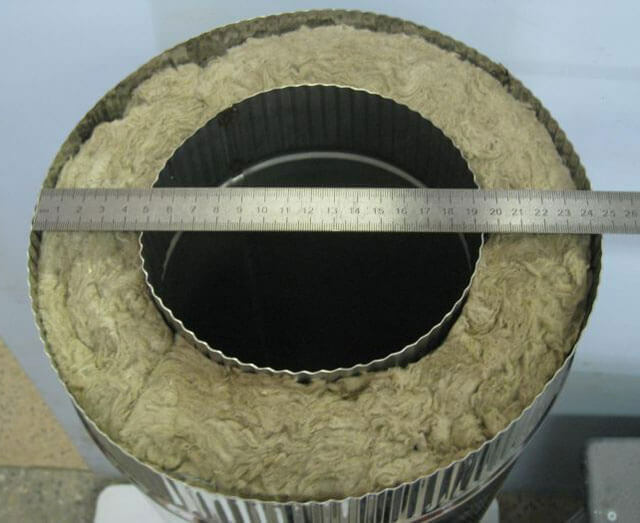
Before starting installation work, it is necessary to determine the size of the cross-section of the sandwich pipe. What will directly affect the efficiency of air exchange in the room
Each set of pipes is accompanied by instructions, using which you can correctly install the ventilation system.
For the correct installation of a sandwich pipe for arranging an exhaust hood, it is enough to have minimal construction skills. Since the product has a male-female design, the joints are freely interconnected.
To ensure sealing at the joints are used gasketsthat can withstand high temperatures (up to 300 ° C).
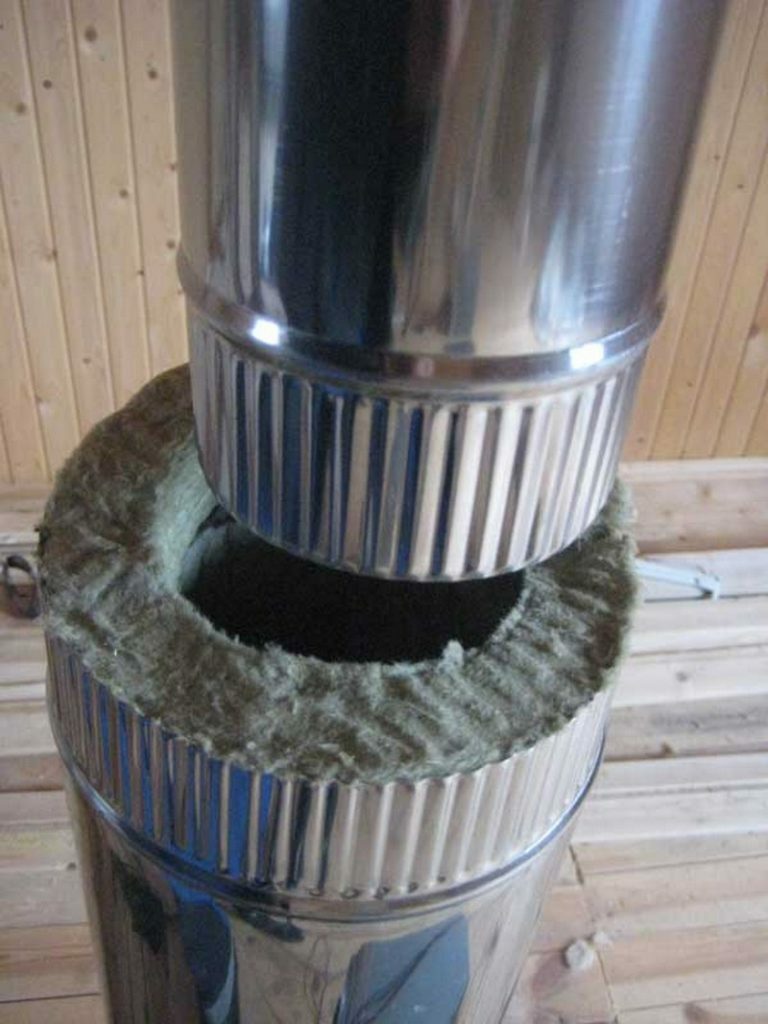
The type of connection "dad-mom" is a slang designation that originated in the middle of the 20th century in factories and industries. For ease of understanding, the workers designated with this expression the possibility of connecting two elements. In this case, in the photo, the lower sandwich pipe will be considered "mom", and the upper one - "dad"
When conducting a ventilation system through walls, it is worth considering the following requirements, which are spelled out in SNiP 41-01-2003:
- pipes should not penetrate the supporting structures; the distance from them should be at least 1 meter;
- in brick walls, the requirements for clearances to ensure thermal expansion are 1 cm. The gap must be filled with basalt wool;
- passing through the wall is recommended to be mounted with a special passage assembly.
The requirements for the passage of the pipe through the ceiling are similar to those that are imposed when passing through the walls. You can add to them - insulation with basalt insulation.

The need to form a small space between the surface of the pipes and the surface of the wall is due to the fact that when operation, the diameter of the pipe may vary (the metal “plays” depending on the temperature of the air). To avoid mechanical damage, free space is required, which must be clogged with a soft heat-resistant material.
When organizing the passage of a sandwich pipe through the roof, it is imperative to observe the following recommendations:
- provide for a special fastening of the pipe head to the roof of the roof;
- organize sealing of the passage assembly with heat-resistant rubber;
- be sure to use a deflector to increase traction.
It is necessary to install the passage of the pipe through the roof with the obligatory use of the factory passage node. Otherwise, the properties of the hood will not be fully ensured when evacuating air from the premises.
Rules and useful guidelines
The basic rules for the installation of ventilation from "sandwiches" practically do not differ from the assembly of ventilation systems from other types of pipes:
- For safety from destruction caused by temperature differences, it is necessary for the most part to place ventilation pipes inside the building. The outlet of the pipe can be carried out both on the roof of the building and through the wall. In the first case, such an organization of the output allows you to more effectively eliminate possible odors.
- It is forbidden to install ventilation pipes in the immediate vicinity of equipment emitting abundant heat fluxes. External heating of the sandwich pipes of the ventilation system will disrupt the internal draft, interfering with the movement of air masses.
- The construction of the ventilation structure should start from the bottom, gradually moving upward, so that each next element of the system is included in the previous one.
Be sure to equip the ventilation duct deflector - This is a special device that allows you to increase the draft of the outgoing air flow, thereby providing a more powerful permeability of air masses. It will also protect from debris and precipitation from entering the ventilation.
It is possible to plant a protective cone, which will also prevent precipitation from entering the system.
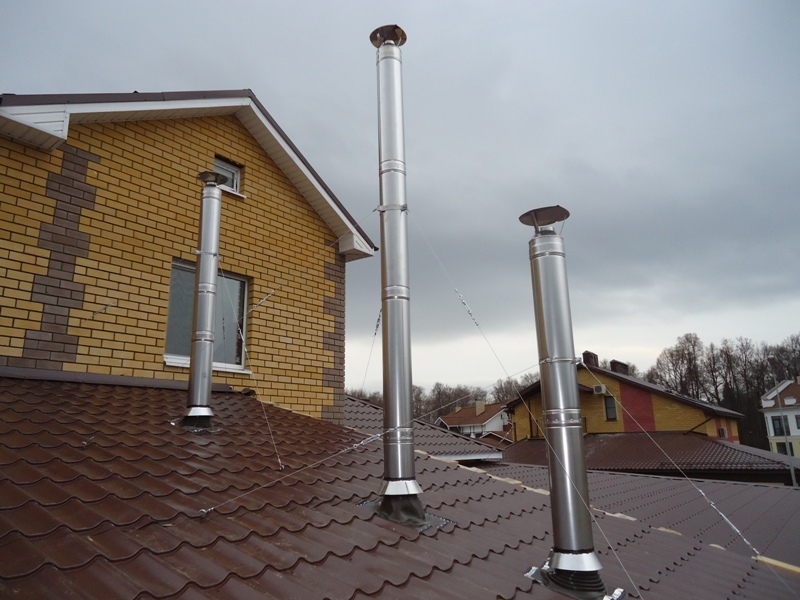
Height of the sandwich pipe exiting through the roof. The lifting height of the ventilation pipe provides normal draft for the organization of air circulation. Depending on the length of the indoor system, the height can be from 50 cm to 3 m
In addition to the above, when installing a sandwich ventilation, you need:
- use components that meet factory standards, since do-it-yourself sandwich pipes will not have the same thermal performance;
- exclude the installation of "homemade" adapters or tees when assembling the ventilation system;
- to give greater strength to the connections, it is necessary to install tightening clamps at the joint for each of the connected pipes;
- most often, a sandwich pipe is mounted on a site that runs in the attic or in other unheated rooms;
- it is forbidden to seal the joints with a sealant, as this can lead to thinning and further destruction of the gasket itself.
This set of measures, combined with a clear execution of the instructions, will allow not only correctly, but also reliably assemble a ventilation system from sandwich pipes.
Correct installation and compliance with the above conditions allows the use of a sandwich pipe for at least the service life set by the manufacturer.
Conclusions and useful video on the topic
For a visual demonstration of how the sandwich pipes for the ventilation system and for the chimney differ from each other, you can watch this video:
The features of installing ventilation on your own are discussed in the following video:
The use of sandwich pipes for ventilation is an optimal solution for both industrial enterprises and small private houses. Ease of assembly and uncomplicated requirements allow you to independently install such a ventilation system.
Subject to the safety rules, assembly instructions and the above tips, the assembled system will be quite effective in operation throughout the entire period of operation..
If, while reading the article, you still have or have questions, or want to supplement the material with useful information, your own experience in installing a ventilation system from "sandwiches", you can voice them in the comments in a special block below.
